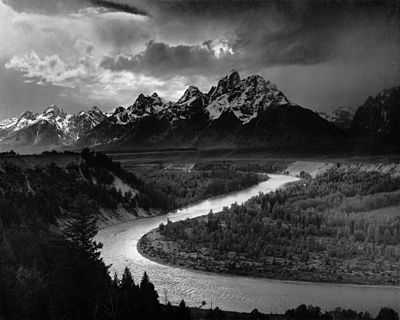Landscape photography

Landscape photography shows spaces within the world, sometimes vast and unending, but other times microscopic. Landscape photographs typically capture the presence of nature but can also focus on man-made features or disturbances of landscapes.
Objectives
Many landscape photographs show little or no human activity and are created in the pursuit of a pure, unsullied depiction of nature[1] devoid of human influence, instead featuring subjects such as strongly defined landforms, weather, and ambient light. As with most forms of art, the definition of a landscape photograph is broad, and may include urban settings, industrial areas, and nature photography. Notable landscape photographers include Ansel Adams, Galen Rowell, Edward Weston, Ben Heine, Mark Gray and Fred Judge.
Environmentalism and landscape photography
Some of the most important and celebrated landscape photographers have been motivated by an appreciation of the beauty of the natural environment and a desire to see it preserved. For example, Ansel Adams spoke passionately in defense of the natural world.
See also
| Wikimedia Commons has media related to Commons:Featured pictures/Places/Natural. |
- Nature photographers
- Aerial photography
- Underwater photography
References
- ↑ Mary Warner Marien (2006). Photography: A Cultural History. Laurence King Publishing. Page 136.
| |||||||||||||||||||||||||||||||||||||||||